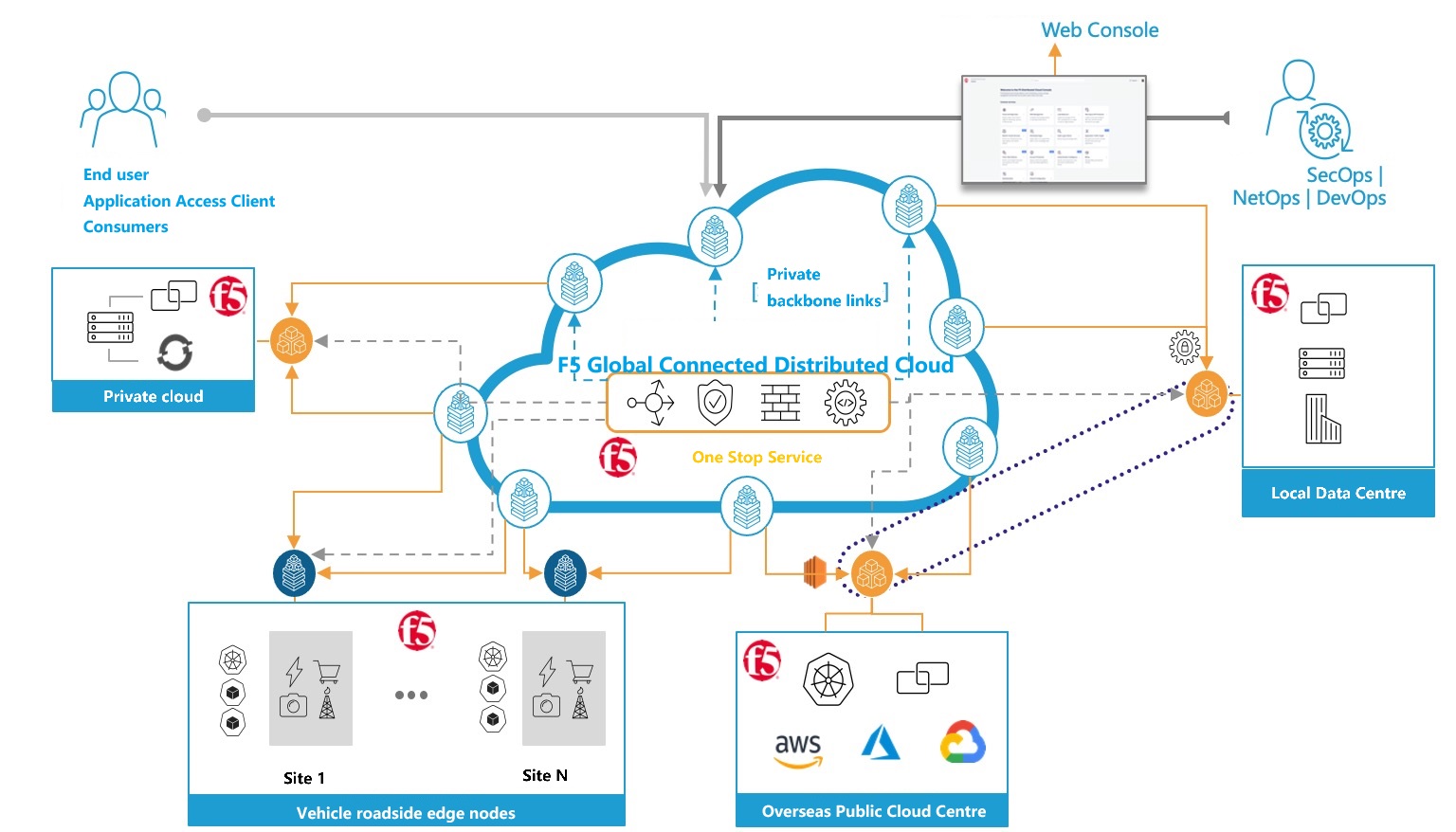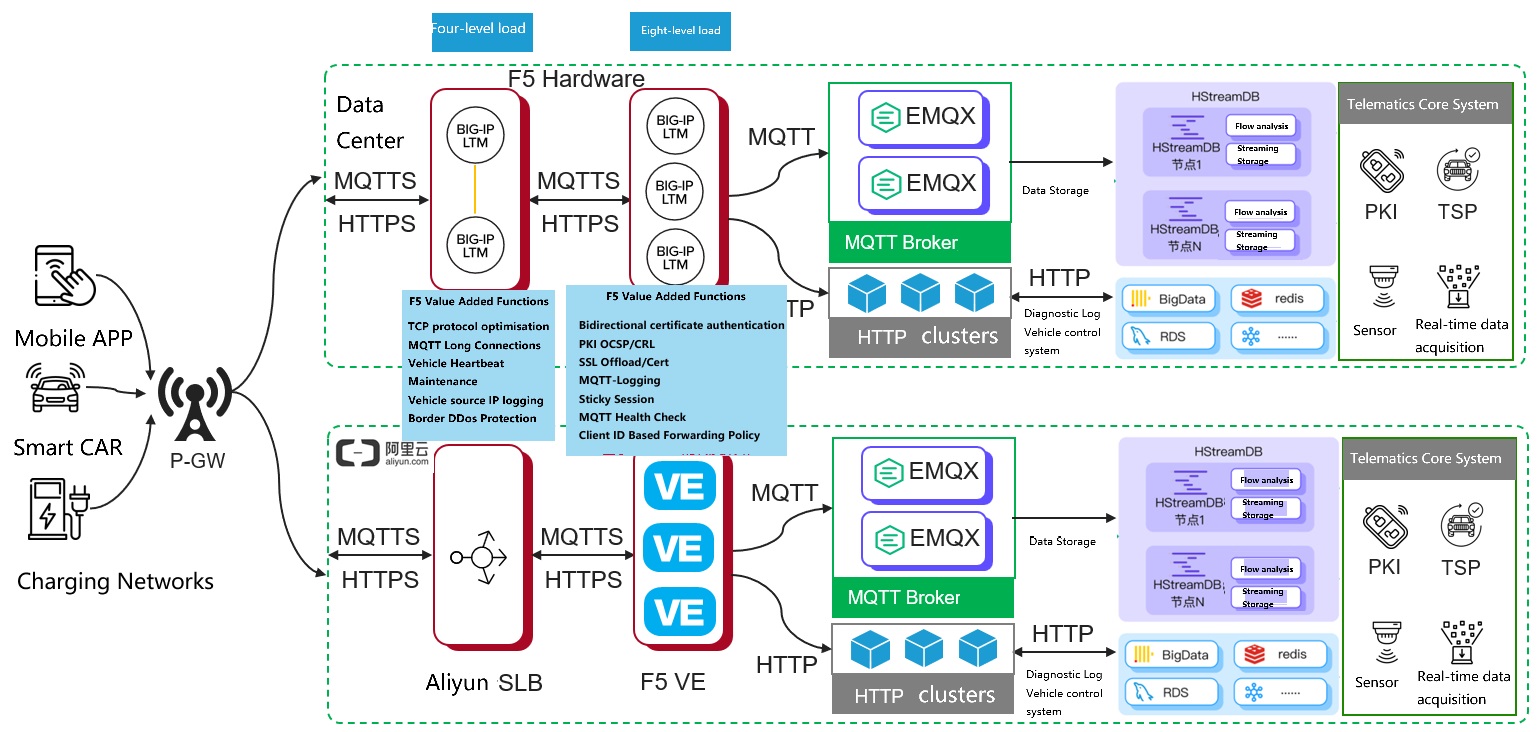Solution Background
As the core platform for intelligent driving operations, the Modern Intelligent
Driving Center must handle massive data exchanges, complex business processes, and
high-concurrency application scenarios. A hybrid cloud architecture—combining the
elasticity of public cloud and the security and control of private cloud—meets its
diverse requirements.
F5, as a global leader in multi-cloud application security and delivery, offers a
solution that effectively addresses the complexity of hybrid cloud environments.

Solution Overview
To address the customer's current situation and needs, F5 provides an innovative resource pool solution to resolve traditional network scalability issues. The solution consists of the following components:
On-Premises Data Center:
- Utilizes a Layer 4/Layer 7 separation network architecture. Layer 4 devices manage internet traffic distribution. Layer 7 devices handle security functions including digital certificate-based identity verification, authentication, and data encryption/decryption.
- Devices are deployed in a resource pool model to improve ROI and high availability. This enables better utilization of performance, ensures business stability and decoupling across zones, and provides cloud-like elasticity to support long-term growth.
Public Cloud:
- A similar architecture is deployed in the cloud using virtualized products.
- Automated tools ensure consistent application services and scheduling strategies with the on-premises setup, maintaining business logic continuity.
Global Scheduling Strategy:
- DNS-based global traffic steering allows vehicle telematics terminals to be intelligently directed between the data center and cloud, optimizing user experience.
- Flexible global scheduling supports sudden traffic spikes with ease.
Visualization Capabilities:
- Integrates with existing NPM and situational awareness platforms to enable real-time monitoring of business systems and network status.
- Heatmap analysis of business data supports operational decision-making by uncovering user behavior insights.
Key Advantages
- Scalability: LTM local scheduling and DNS global load balancing enhance application availability.
- Progressive Deployment: Both applications and network devices support gray releases for controlled updates.
- Efficiency: Equal-cost load balancing ensures all nodes in the resource pool actively process and forward telematics data.
- Resource Optimization: Flat resource pool architecture enables flexible operations and high resource utilization.
- Root Cause Traceability: Log-based retrieval traces the origin of anomalies, aiding in service performance evaluation.
- Business Visualization: Visualizes telematics system data for performance diagnostics and bottleneck detection.
- Unified O&M: Centralized monitoring of cloud and on-prem resources with standardized, automated configuration and deployment templates.
Customer Challenges
- Dynamic scaling required to support rapidly growing traffic demands
- Safe collection of non-sensitive vehicle data to identify hidden risks and derive insights
- Ensuring consistent policies and service continuity across hybrid environments

Customer Benefits
- Improved Business Stability: Ensures stable service even under traffic surges or network failures.
- Enhanced Security: Strong protection against network threats and safeguarding of core intelligent driving data and applications. Policy consistency across multi-cloud environments.
- Cost Optimization: Elastic resource allocation based on business needs maximizes public cloud usage, reducing costs during peak periods.
- Simplified Management: Unified platform simplifies operations across data centers, clouds, and edge environments, reducing complexity.